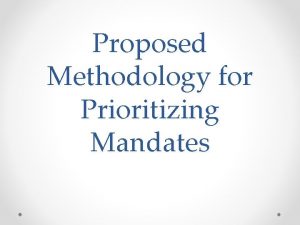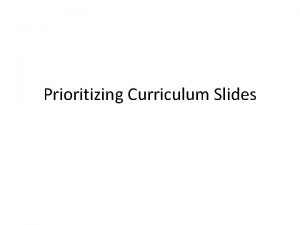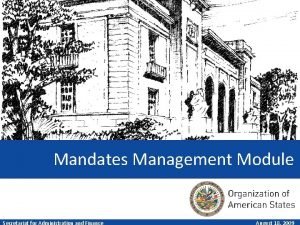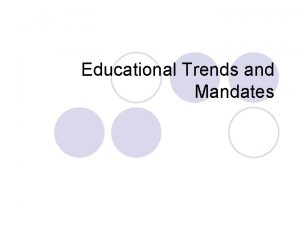Methodology for Prioritizing Mandates Current Status 751 mandates







- Slides: 7

Methodology for Prioritizing Mandates

Current Status • 751 mandates classified as: o A: Policies or general policy guidelines on the issue in question. o B: Specific measures or activities that support the implementation of type A mandates. o C: Operational mandates of an administrative or financial nature. • Vision (approved) • Strategic guidelines and strategic objectives (negotiation)

Prioritization Methodology Step 1: Updating of Mandates. Step 2: Applying a filter to identify consensus mandates. Step 3: Aligning A and B mandates with the Strategic Objectives of the OAS Step 4: Classification of B Mandates according to program impact and the Organization's installed capacity for implementing them

Step 1: Updating of Mandates. Inclusion of mandates from the last GA Identification of duplicated mandates Classification of new mandates into types A, B, and C. A and B mandates: Prioritization by a Working Group of the Permanent Council C mandates: Secretariat's judgment

Step 2: Applying a filter to identify consensus mandates.

Step 3: Aligning A and B mandates with the Strategic Objectives of the OAS • Alignment of A and B mandates with Strategic Objectives o Very high o High o Intermediate o Low o Very low

Step 4: Classification of B Mandates according to program impact and the Organization's installed capacity for implementing them Evaluation of programs from the point of view of their impact and OAS installed capacity to implement them Impact: institutions/countri es, populations benefited, for how long, etc. Installed capacity: cost of the program, time and human resources needed to carry it out.













